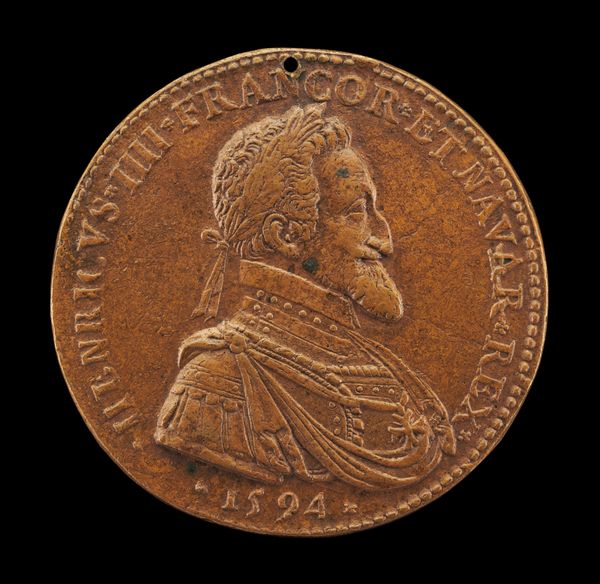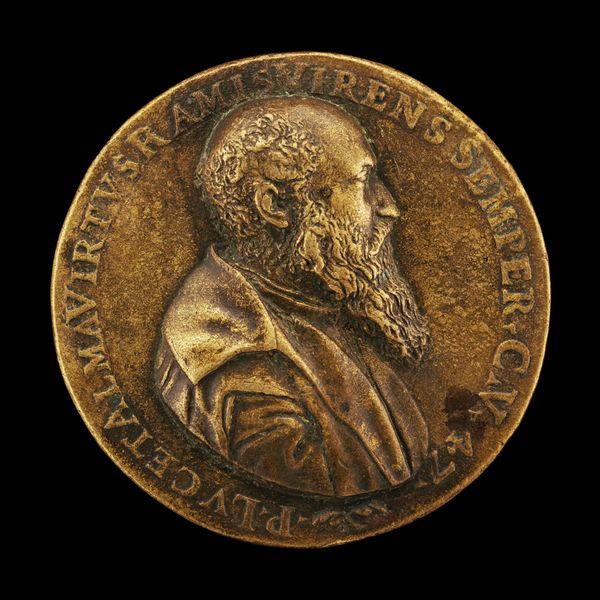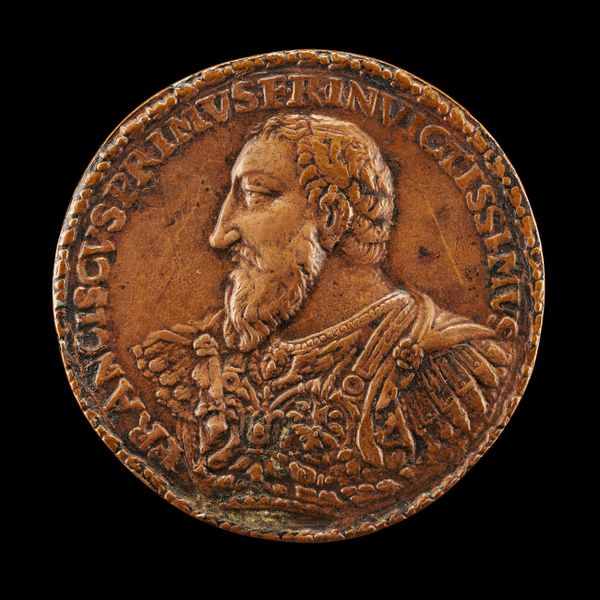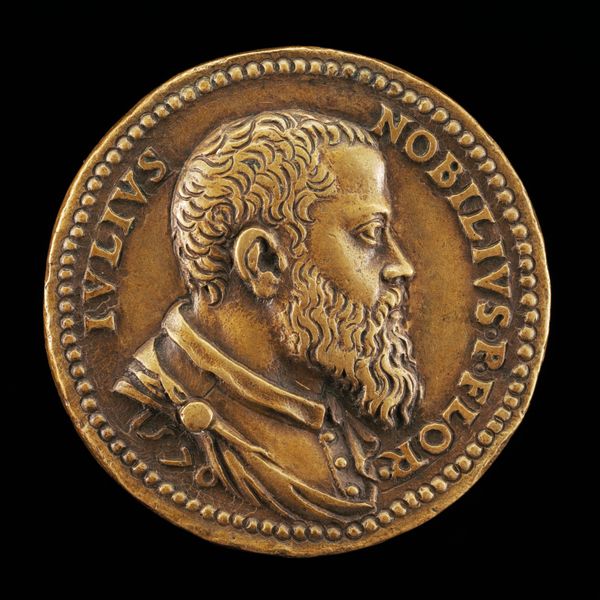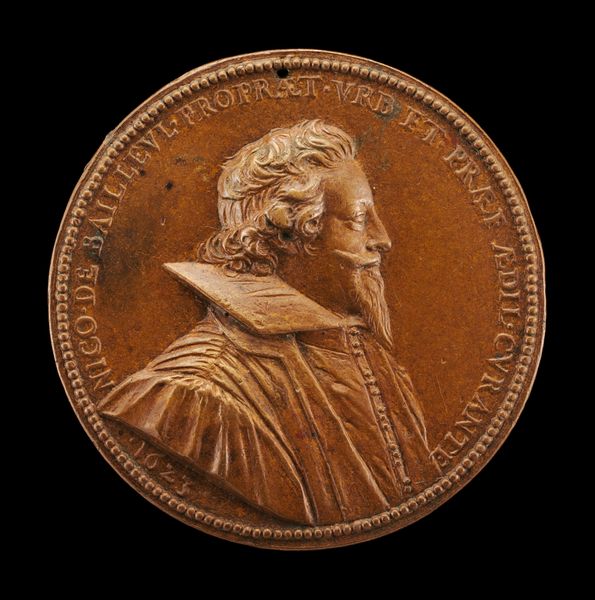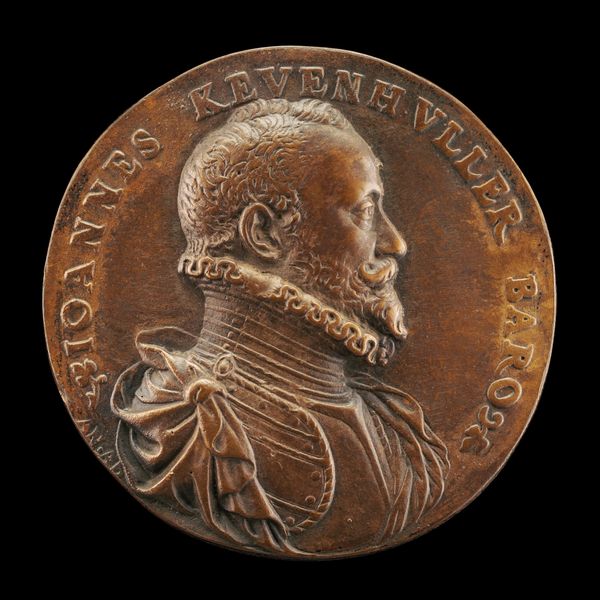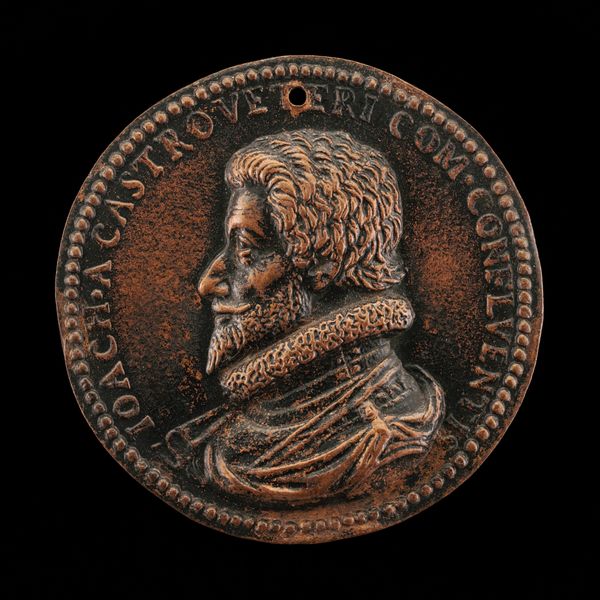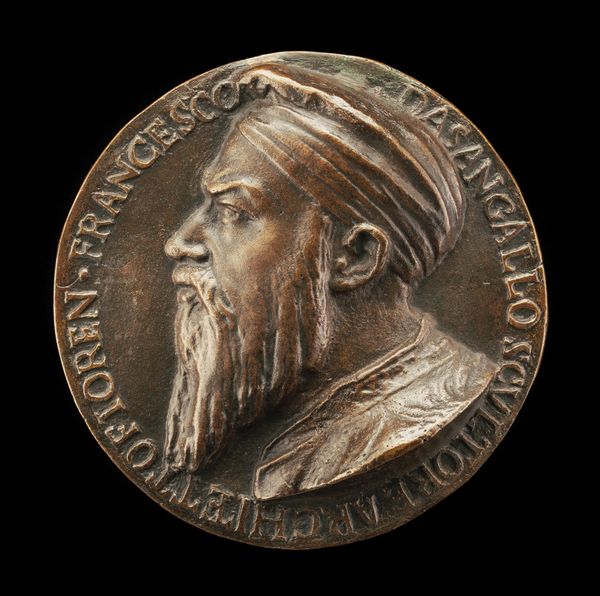![Hieronymus Paumgartner, 1498-1565, Patrician of Nuremberg [obverse] by Joachim Deschler](/_next/image?url=https%3A%2F%2Fd2w8kbdekdi1gv.cloudfront.net%2FeyJidWNrZXQiOiAiYXJ0ZXJhLWltYWdlcy1idWNrZXQiLCAia2V5IjogImFydHdvcmtzLzkwMDU2YTVkLTBlZjktNDkyNy1hZTM1LTMxYzQ1OTNmMjRmZi85MDA1NmE1ZC0wZWY5LTQ5MjctYWUzNS0zMWM0NTkzZjI0ZmZfZnVsbC5qcGciLCAiZWRpdHMiOiB7InJlc2l6ZSI6IHsid2lkdGgiOiAxOTIwLCAiaGVpZ2h0IjogMTkyMCwgImZpdCI6ICJpbnNpZGUifX19&w=3840&q=75)
Hieronymus Paumgartner, 1498-1565, Patrician of Nuremberg [obverse] 1553
0:00
0:00
metal, bronze, sculpture
#
portrait
#
medal
#
metal
#
sculpture
#
bronze
#
11_renaissance
#
sculpture
Dimensions: overall (diameter): 6.61 cm (2 5/8 in.) gross weight: 80.16 gr (0.177 lb.) axis: 12:00
Copyright: National Gallery of Art: CC0 1.0
Editor: This is a bronze medal from 1553 by Joachim Deschler, a portrait of Hieronymus Paumgartner, a Patrician of Nuremberg. The texture of the bronze looks incredibly smooth. I’m struck by how three-dimensional it appears, especially given it’s a medal. What can you tell me about this work? Curator: Well, let’s start with the materiality of this piece. Deschler's choice of bronze is significant. The production of these medals involved a complex process from design to casting, and that dictated the kind of imagery that it could bear. Bronze signified permanence and status, reflecting Paumgartner's standing within Nuremberg society. Editor: So, the material itself communicates something about Paumgartner's identity and Deschler's craft? Curator: Exactly. Consider how the act of replication factors into this portrait medal. Deschler produced these presumably for circulation – who would the audience for these be, and what’s conveyed through their giving and receiving? These medals allowed for the wide distribution of his image, solidifying his status and reputation within a broader social network. The production and circulation of these objects really created and reinforced social hierarchies. Editor: I never really considered it that way. I was focused on the likeness, but the material and the means of its production are just as important to understanding its significance. I suppose you could say that it literally *embodies* status. Curator: Precisely. And, further research could illuminate Deschler’s workshop practices or even reveal information about where the raw materials originated. It is by focusing on material processes that we are better able to really understand the social and political milieu in which this object was created and circulated.
Comments
No comments
Be the first to comment and join the conversation on the ultimate creative platform.

